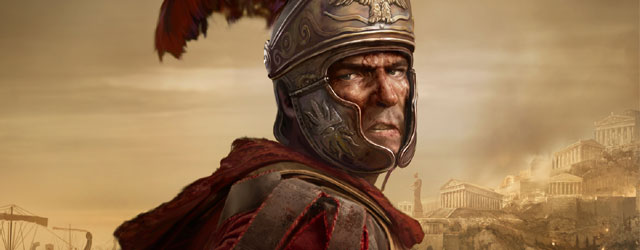[tab:Review]
In years past, one of my favorite ways to spend an evening was assembling some friends and playing a game of Risk. Total War Rome II reminds me of those days, only it’s about a million times more complex. It’s an amazingly deep experience that can be intimidating at first, but exceptionally rewarding for those who are willing to put some time into learning it.
The objective is conquering the known world. In order to do that, players will control forces on both a macro and micro level, managing a whole empire while still fighting the individual skirmishes required for world domination.
It all begins with a tutorial that walks the player through the two main sections of the game, fighting a battle and making decisions on an empire-wide scale. The tutorial does a good job of introducing the basic concepts and how to play, but it only hints at the real complexity here. Fortunately, tips on any of the game’s many menus are just a mouse hover away, and in most areas more detailed instructions can be had by right clicking.
On the world map, turns are measured in seasons. Territories are divided into provinces, sub-divided into regions. During a season players can move a general and his troops a certain distance on the world map, and perform numerous activities in the different regions. Here is where things can become intimidating, as there are a large number of items to keep track of.
Naturally, the movement of enemy troops has to be monitored so the player is ready for an incoming attack. However, there are numerous domestic factors that also come into play. For instance, a high tax rate will allow for greater army building, but will leave the populace unhappy and on the verge of revolt. Players can choose to invest in various technologies in order to improve their civilizations or in building up areas in order to produce better armor or other goods. Spies can be recruited and sent out into the world to gain intelligence on the enemy. There are a ton of factors here, and it can get a little overwhelming. Fortunately, when I tried to end a turn without addressing some major need, the game was graceful enough to suggest that I handle it before ending.
For everything that can and must be done on the world map, it’s all just preparation for the series of battles necessary for world conquest. Battles can range from trying to take over an enemy stronghold to putting down a peasant rebellion. For most battles, victory can be had by either wiping out the enemy or holding a strategic position or positions on the map for a certain amount of time.
Using the troops I had raised and recruited, I met the enemy head on. As expected there is a great deal of troop variety, from basic melee units to ranged fighters and troops on horseback. Each has their own strengths and weaknesses, and the battlefield itself can turn the tide of war in one direction or another. For example, troops approaching from the trees are less likely to be spotted by the enemy, and fighting downhill gives melee troops an advantage.
I’m not much of a military strategist, but using the skills learned in the tutorial I was able to hold my own and command a successful army (most of the time anyways). My experiences in war were as I expected, although in one instance I was able to march troops right up behind an enemy without them ever noticing I was there, which was odd. For players who are only interested in the macro aspects of the game, skirmishes can be fought automatically, removing the need to ever command troops on the battlefield.
In addition to the wealth of single player content, the game sports several multiplayer modes. The campaign itself can also be played multiplayer, or single battles can be set up with one or more players. At the start of a multiplayer game, each player has a certain amount of money they can spend on troop recruitment, and then they can place their troops strategically on the battlefield. Since choosing troops can be somewhat time-consuming and really slow things down in larger games, players can save custom troop configurations for quick access, which is really nice. In my experience the multiplayer performed smoothly, and had no performance difference from the main game. The only issue I had with the multiplayer was when I tried to spectate matches, which resulted in various error messages and never actually worked.
Total War Rome II looks and runs smoothly, and I was able to easily pan around the battlefield or zoom in close to watch my troops engage the enemy, which was cool. Troops carry large flags, making them easy to find, and generals are clearly marked as well. The game has an appropriately grand soundtrack to fit the mood, which helps keep up the feeling during the occasionally long loading screens.
As a strategy noob I was initially intimidated by the game, but with the help of the tutorial and constant access to detailed instructions I was able to make a decent effort on the battlefield. For those willing to invest the time, the level of depth present in the game is really impressive. If you’re a hardcore strategy fan it’s definitely worth a look, and if you’re new to the genre and have the patience to learn, it’s not a bad place to start.
Review copy of game provided by publisher.
[tab:Screenshots]
[tab:END]




Muuuse
Soo how much did you get payed for this score? 8 out of 10 what a joke no wonder nobody trusts gaming critics anymore